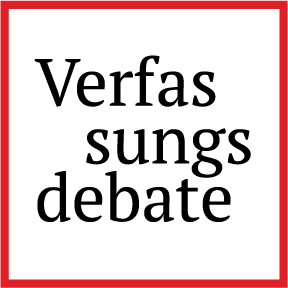The Judicial Overhaul Post October 7
Populist Constitutionalism in Israel Under the Fog of War
In the span of one year, Israel experienced two historic crises: a constitutional crisis triggered by the 2023 judicial overhaul and a national security emergency following Hamas’ October 7 attack. Either event alone could have destabilized democratic institutions, yet their convergence deepened threats to Israel’s liberal democracy. Contrary to the expectations of many Israelis, the security crisis did not halt the judicial reform process. Instead, it served as a smokescreen that enabled the government’s continued pursuit of populist constitutional transformation.
The 2023 Judicial Overhaul
On January 4, 2023, Justice Minister Yariv Levin unveiled a sweeping plan to recalibrate the judiciary’s role, branding it a “governance reform.” The reform was pitched as a measure to restore balance between the branches of government, against the backdrop of the increasing power of the Israeli Supreme Court and allegations of judicial activism. However, critics identified the judicial overhaul as a textbook case of abusive constitutionalism — a set of reforms aimed not at improving governance but at consolidating power in the executive branch and weakening checks and balances.
These proposals sparked unprecedented public opposition, including mass weekly protests of hundreds of thousands, sectoral resistance from the high-tech industry and military reservists, and condemnation from former Supreme Court Justices and legal scholars. The government advanced parts of the overhaul despite this backlash. Most notably, on July 24, 2023, the Knesset passed a constitutional amendment abolishing the reasonableness ground for administrative review of governmental actions. This amendment was struck down by the Supreme Court on January 1, 2024, in a landmark 738-page decision—the first time the Court invalidated a section of a Basic Law.
October 7 and the Unity Government: A False Pause
The Hamas-led October 7 assault, resulting in over 1,200 Israeli deaths and 240 abductions, was described as Israel’s “9/11 moment.” This traumatic moment in the life of the nation, with the war in Gaza that seemed decisive for Israel’s national security, led to the formation of a limited wartime unity government including opposition leaders Benny Gantz and Gadi Eisenkot.
While the agreement for establishing a unity government formally suspended judicial overhaul legislation of the Knesset during wartime, it did not freeze administrative actions furthering the same goals. Levin and other officials openly stated their intention to revive the overhaul after the war. Meanwhile, the government quietly implemented measures to erode judicial independence and institutional checks — actions largely unnoticed as public attention focused on the war, the hostages, and national mourning.
Later, when Gantz and Eisenkot resigned in June 2024 over Netanyahu’s failure to produce a postwar Gaza strategy, the war cabinet dissolved, further freeing the government to resume its domestic agenda.
Continuation of the Judicial Overhaul
Post-October 7, the overhaul strategy shifted to various incremental and multiple means. In his administrative capacity, Justice Minister Levin refused to appoint Supreme Court President Isaac Amit based on the seniority convention and delayed filling three judicial vacancies at the Supreme Court. All outgoing justices were liberals, resulting in a de facto conservative shift at the court. When Justice Amit was finally elected as President of the Supreme Court, the government refused to recognize this appointment and to collaborate with him.
Furthermore, in March 2025, the composition of the judicial selection committee was altered, fundamentally politicizing the process of selecting judges and granting greater control to the coalition. Judicial independence was further eroded by changing the process for appointing the ombudsperson for the judiciary, the organ responsible for disciplinary complaints over judges. In the same vein, the appointment process for the Civil Service Commissioner was politicized through an illegal process, according to the High Court of Justice’s judgment, which underscored the growing executive encroachment on independent institutions. Additionally, the Knesset enacted laws that weaken the Bar Association’s autonomy, curtailing freedom of the press, and currently debates a proposed law that imposes tax on foreign-funded civil society organizations, while another bill aims to disqualify Arab political parties more easily, in order to undermine the competitiveness of the elections.
Finally, there is a growing attempt to politicize law-enforcement agencies. Following the 2022 “Ben-Gvir Law,” in 2025 the Supreme Court struck down parts of the law expanding ministerial control over police investigations, but other provisions survived, leaving law enforcement partially politicize; and the government is continuing in its efforts to control the position of the head of the internal security services (while there is an ongoing investigation on the relationship of top advisors in the Prime Minister’s office with the Qatari government). Recently, the government, in an illegal process, voted to remove the Attorney General from office, who also heads the state prosecution (this is the place to remind the readers that Prime Minister Netanyahu is under a criminal trial). However, this decision has been frozen by the Supreme Court for now.
In summary, the period following October 7, 2023, has seen significant actions by the Israeli government that have raised concerns about the erosion of judicial independence, the politicization of key institutions, and threats to democratic principles and the rule of law.
How the Overhaul Persisted: War as Enabler
The post-October 7 constitutional acceleration in Israel raises a fundamental question: how is this happening, especially under conditions of national trauma and war? While many observers assumed that the attack would postpone, or even cancel, the judicial overhaul, the opposite occurred. Several factors could explain this:
First, the Fog of War. Emergencies allow executives to concentrate power. Israel’s permanent state of emergency — and its deepening after October 7 — blurred lines between temporary crisis and enduring constitutional transformation. With the public preoccupied with war, bereavement, and the hostage crisis, the executive branch exploited the moment to push forward policies that would ordinarily (as occurred pre-Oct. 7) provoke substantial backlash. With national attention elsewhere, institutional changes proceeded without mass resistance.
Second, scapegoating the judiciary. Government figures blamed the judiciary and legal advisors for the October 7 failures, suggesting that legal constraints had hindered defensive action. This narrative diverted blame from political leadership and delegitimized oversight institutions. Furthermore, the government accuses the judiciary of aiding Hamas by hearing legal petitions concerning humanitarian aid to Gaza.
Third, incrementalism. The government adopts a strategy of small, seemingly technical legislative and administrative changes. This “governing by a thousand cuts” evades public and media scrutiny. This is consistent with what scholars call “stealth authoritarianism,” where executives undermine democracy through accumulations of technical rule changes that, in isolation, may appear marginal but cumulatively reshape the democratic architecture. By utilizing lower-profile routes, such as administrative or regulatory acts or private legislative bills introduced by Knesset Members, the government can achieve similar outcomes to formal constitutional reforms without public uproar.
Finally, security-based populism. Populism has traditionally emerged in response to economic hardship, cultural conflict, or social inequality. European and American populists often mobilize support by emphasizing economic anxiety or anti-immigration sentiment. However, as Yonatan Levi and Shai Agmon correctly observe, in the Israeli context a distinct form of security-driven populism has evolved — one that prioritizes national survival over liberal-democratic norms. Israeli populism hinges on existential fears linked to the ongoing Israeli-Palestinian conflict, regional instability, and the memory of historical trauma. This form of populism has proven particularly potent in the wake of the October 7 attacks, which were the deadliest assault on Israel in decades. The Israeli government, led by the most extreme right-wing coalition in its history, seized upon the security emergency not to pause its controversial judicial overhaul, but rather to justify its continuation and accelerate broader illiberal transformations. The heightened security discourse allowed the government to entrench executive authority, delegitimize judicial and legal constraints, and limit civil liberties — all under the banner of safeguarding the nation.
But where is the protest?
The protest movement against the judicial overhaul, pre-October 7, was unprecedented in its breadth and persistence. But in the aftermath of October 7, it lost much of its energy and strength. This can be explained by various social dynamics, and foremost, perhaps, the ‘Rally-Round-the-Flag’ syndrome. Wartime patriotism discouraged political dissent. Criticism of the government or its domestic agenda was perceived as disloyal, giving the coalition space to act without opposition. Moreover, thousands of people serve in the reserves, have lost their homes or work; in this climate, who has the emergency to go out and protest while the government is appearing to ignore public outcry.
Furthermore, the focus on the hostages rechanneled public concern toward humanitarian advocacy, sidelining judicial issues. Formerly active protest organizers redirected energy to hostage campaigns, which is considered the most burning and important issue on the agenda.
It is also important to note, as Professor Adam Shinar argues, that the prewar protest movement emphasized universalist democratic values, often avoiding the occupation or Arab-Palestinian rights. This limited its appeal to Arab citizens and dulled its postwar relevance as the government’s actions disproportionately affected those communities.
Finally, one of the most potent tools of resistance to the judicial overhaul was the threat by IDF reservists to refuse service. This tactic garnered significant media attention and brought pressure on the government. However, after October 7, this strategy became politically and morally untenable. The scale and brutality of the Hamas attacks led many Israelis to view military service as sacrosanct. Accusations soon surfaced that previous threats of refusal had emboldened Hamas by signaling national weakness. In this climate, any suggestion of leveraging military service for political protest was met with hostility, if not outright criminalization. As a result, one of the most effective pressure points used by the protest movement in 2023 was now defused.
Conclusion
One might have expected that the horrors of October 7 and the ensuing war in Gaza would have frozen, if not entirely abandoned, the contentious judicial overhaul in Israel. A nation under existential threat, grappling with unprecedented violence, and striving for national unity would presumably shelve divisive domestic reforms. Yet the opposite occurred. The security crisis served as an accelerant for the governing coalition’s populist agenda, as the populist government’s efforts to weaken judicial independence, control key institutions, and consolidate power intensified. The Israeli story thus demonstrates how the security crisis can enable and facilitate a populist constitutional project.
The challenge now facing Israeli democracy is twofold: to rebuild public trust in constitutional governance while safeguarding the institutions that preserve the separation of powers and fundamental rights. The postwar period must become a moment not only of national reckoning, but of democratic restoration.
An elaborated version is forthcoming in Yaniv Roznai, ‘The Judicial Overhaul in Israel Before and After October 7: The Amalgamation of Constitutional Crisis & Security Crisis’ in Constitutional Polycrisis and Emergency Constitutionalism (Martin Belov ed., Springer 2025). The author is a researcher under the International Mobility Programme (Assessing Constitutional Crisis Impact and Security (IMP-ACCTS) – Project Proposal TNE23-00057 – CUP B61I24000450006).



